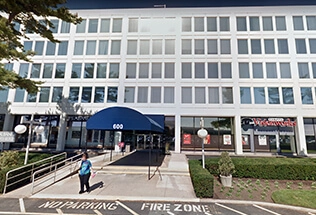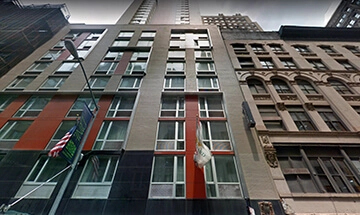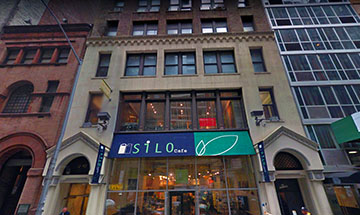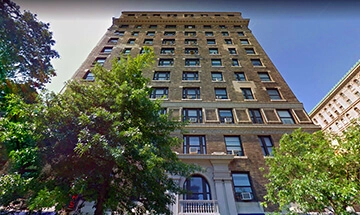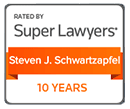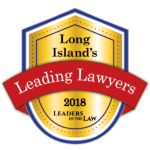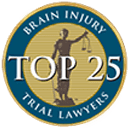Every year, hundreds of product liability cases show up in America’s courts. But if you’re unfamiliar with the intricacies of the process, it’s easy to become overwhelmed and even discouraged.
Don’t let appearances fool you, however. It’s more straightforward than you think, especially with our help.
To help educate yourself, we’ve collected a series of cases to show specific examples of how we can help you through complicated legal procedures.
M.H. v. BED BATH & BEYOND
Michael Hubbard vs Bed Bath & Beyond is a 1st department case where a New York design defect law used the risk-utility” approach to determine the outcome.
The plaintiff (party or individual bringing a case against another in the court of law), Michael Hubbard, was a 14-year old boy raised by his single mother, Nancy.
During an outdoor family party, Michael helped his mom and relatives during his aunt’s wedding.
Michael’s mom asked him and his cousin to light up a Fire Burners Pot” which she had purchased from Bed, Bath & Beyond to use as a citronella candle to keep away bugs. The ceramic pot consisted of a steel fuel reservoir that contained gelled fuel.
Because the gel did not appear to be catching fire, Michael’s cousin added more fuel to the pot. This caused the pot to explode into a fire, and the resulting combustion caused flaming gel to explode over half of Michael’s body.
The explosion caused 3rd degree burns so severe, Michael’s organs failed and he went into cardiac arrest.
9 days after the incident, Michael’s brain was deprived of oxygen for 13 minutes before doctors resuscitated him.
Since the incident and his hospitalization in 2013, he’s been confined to a nursing home.
A Summary Judgment
This case was a rare incident where the plaintiff was granted Summary Judgment on the design defect claims.
A summary judgment occurs when the court concludes without a full trial – that is, there are no important facts for one side to dispute, and the pieces of the puzzle all fall into place.”
Summary judgment was granted based on circumstances as shown below.
First, the plaintiff submitted an expert affidavit establishing the product was simply not safe for the following reasons:
1) When refueled with the fuel gel, the fire pot can combust/explode.
2) When the fuel gel inside the steel cup burns down, it can appear that the flame is extinguished (when it is in fact still alight).
3) Fuel gel is a highly sticky and adherent substance and is difficult to extinguish
4) The dangerous conditions were latent and hidden; they were not readily apparent to a layman.
5) The fact the flame could appear to be extinguished, yet there was no easy way for a non-expert to ascertain whether it was, made the product highly dangerous.
The Court’s Decision
The court used the risk/utility test” to analyze whether Bed Bath & Beyond breached their duty to market safe products using the following 3 criteria:
1. Whether the risks inherent in product outweighed product’s utility and cost
2. What degree of awareness of the potential danger could reasonably be attributed to the plaintiff
3. Cost related to improving safety of the design
The court decided that the product has minimal utility and posed an extraordinary safety risk, based on the expert’s testimonial.
Furthermore, BB&B could have easily implemented alternative designs such as using fuel gel in non-refillable metal cans or cartridges (i.e., a sterno) that get inserted directly into the firepot, which would greatly mitigate the probability of disaster.
Lessons to Learn
The plaintiff can certainly be successful on a summary judgment motion in product design defect case.
The key is obtaining all the facts from your clients with extreme precision; in this case, the understanding that a consumer wouldn’t be able to tell whether gel was lit or extinguished helped the court reach the SJ without resistance.
Finally, having a great expert on product design (and flaws) is critical, since the court is more likely to defer to experts.
WHOLEY v. AMGEN INC.
Wholey vs Amgen took place in the New York County Supreme Court and was presided by Judge Eileen Rakower.
Case: 2017 N.Y. Misc. LEXIS 852
The plaintiff took the prescription drug Enbrel for rheumatoid arthritis and brought product liability actions to court, alleging she developed tongue cancer because of the drug.
The product label included warnings regarding non-Hodgkins lymphoma and squamous cell cancers.
The plaintiff claimed she AND her doctor were not warned the product could potentially cause tongue cancer, yet the risk was well-known to defendants.
Defendant’s Summary Judgment Denied
The defendant (Attorney reps of Amgen) tried to reach a summary judgment by claiming the drug was FDA approved, so any design defect claim would be preempted. Furthermore, no alternative design was possible for an FDA approved biological drug because once approved by FDA, it is not legally or scientifically possible to change the design.
However, the court DENIED summary judgment based on the following plaintiffs’ rebuttals:
1) The plaintiff argued that the FDA did not regulate the development of the drug. Until the drug approval application was submitted to FDA, Amgen had complete control over the drug and evaluated multiple formulations before selecting which one would be submitted.
2) Furthermore, the plaintiff also alleged there were safer alternative designs and formulations, which Amgen chose not to pursue.
The plaintiff continued their side of the case by using clauses from the Consumer Fraud Claim, which under GBL § 349 requires the following:
i. deceptive act was consumer-oriented
ii. deceptive act was misleading in a material respect; and
iii. plaintiff was injured as a result
Ultimately, the court DID NOT dismiss this claim, and agreed that Amgen omitted critical information by failing to disclose the known risks that resulted in injury to the plaintiff.
Granados v. Balemaster
Granados v. Balemaster took place in the Supreme Court of Suffolk County and was presided by Judge Joseph Farneti.
The lawsuit serves as the perfect example of a material alteration case.
The plaintiff, who worked for ERRI operating 3 large compacting machines, suffered traumatic leg amputations while servicing a hydraulic compactor/baler.
Employees of ERRI were responsible for maintaining those machines.
The compactor (as designed) had a limit switch that would automatically disable the baler when the feed chute door was opened.
However, the limit switch was disabled by the plaintiff’s supervisor in order to increase productivity.
Defendant’s Summary Judgment GRANTED
The defendant claimed the following:
1. The product was not defectively designed at the time it left the factory.
2. The baler’s safety features were not designed to be disabled.
3. The purchaser voluntarily disabled the limit switch.
4. The manufacturer warned users against disabling the limit switch.
Plaintiff vs Property Owner
Additionally, the plaintiff brought causes of action against the property owner sounding in general negligence.
Normally, courts rely on general rules of negligence, which hold the landlord has a duty to maintain his property in reasonably safe” conditions.
This duty may be breached if dangerous conditions are permitted to exist.
Here, the property owner had developed and implemented a safety training program for ERRI employees. The court ruled it is unreasonable to expect the owner to have control over how ERRI handles their operations.
The lesson? Don’t forget to bring a negligence cause of action in a court case if you have one.
GONZALEZ v. 3M COMPANY
Gonzalez v 3M took place in the Supreme Court of New York County, and was presided over by Judge Mendez.
In this wrongful death case, the decedent was exposed to asbestos while working as a television and radio repair man from 1965-2000.
The vintage radio and TV sets contained a white heat-shield that emitted white dust that contained asbestos.
PHILCO and PHILCO-FORD manufactured the products, and eventually FORD MOTOR COMPANY acquired the assets and assumed liabilities of PHILCO.
Those liabilities were transferred to GTE Sylvania. The plaintiff filed a motion for an order finding Ford as the legal successor to PHILCO, but FORD filed a motion to dismiss.
Judge Mendez’s decision
The generally accepted rule is that a corporation which acquires assets of another is not liable for torts of a predecessor corporation except where:
1. The successor corporation expressly or impliedly assumes the predecessors’ tort liability
2. There is a consolidation or merger
3. The purchasing corporation is a mere continuation of the selling corporation
4. The transaction is performed fraudulently to escape liability.
In this case, FORD assumed the liabilities of PHILCO and is therefore the legal successor” to PHILCO and PHILCO-FORD.
RICKICKI v. BORDEN and Informed Intermediary Doctrine
This type of case usually arises in the context of pharmaceuticals cases and the failure to warn the prescribing physician of risks associated with a certain drug.
However, it came up this year in context of a manufacturer’s responsibility to warn workers (as opposed to just employers) of dangers associated with certain products.
The plaintiff brought action against silica manufacturers seeking damages due to their exposure to silica dust while working.
The trial court granted the Defendant’s motion for summary judgment on the theory of Informed Intermediary Doctrine.”
However, the 4th Dept overturned the court decision, stating that the Informed Intermediary Doctrine DOES NOT apply to warnings given to employers.
The manufacturers are not shielded from liability when all they had to do was place a warning on the bag of silica handled by employees.
Winning a Products Liability Case
Meticulously analyzing these five cases reveals the following lessons (for plaintiffs):
1) Expert selection is critical. You MUST be absolutely sure your expert is well-versed in the subject and pre-empts all positions of attack.
2) The plaintiff should provide as much detail as possible to create deductive chains from beginning to end.
3) Omissions of warnings by the manufacturer are often grounds for the court siding with the plaintiff.
4) Conversely, if the product is altered in a manner that the manufacturer explicitly warns against, the plaintiff is unlikely to win the case.
5) The successor corporation does not assume the former corporation’s liabilities, unless certain criteria are met. These criteria include mergers, implicit/explicit acceptance of liability, the new entity as a mere continuation of the former corporation, and fraudulent transactions.
6) An informed intermediary,” or a party that acts as a contact point between manufacturer and consumer, has a duty to warn the consumer of potential side effects.
We hope this information proves useful to you, and please contact us if you have any further questions!

